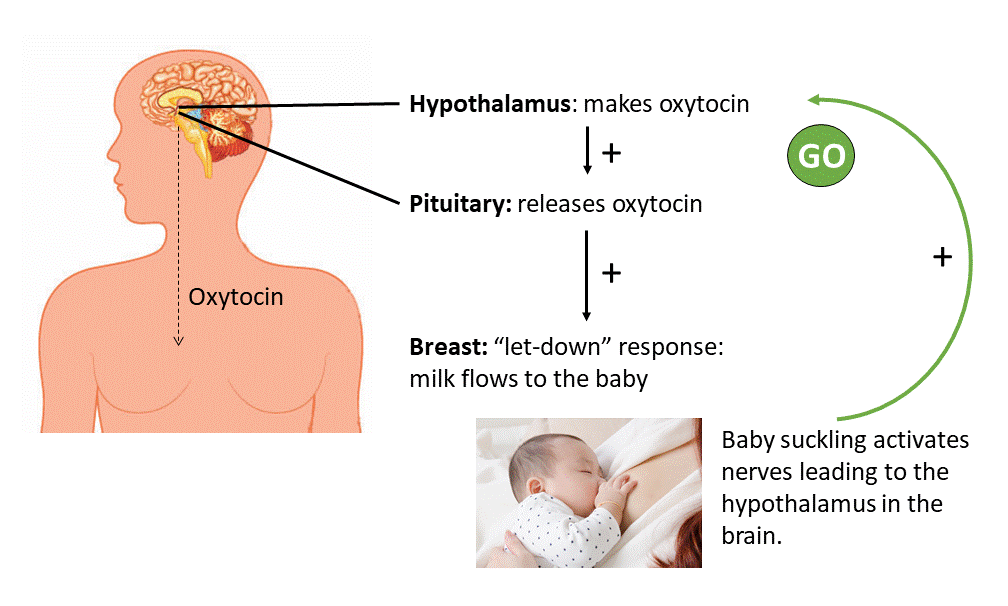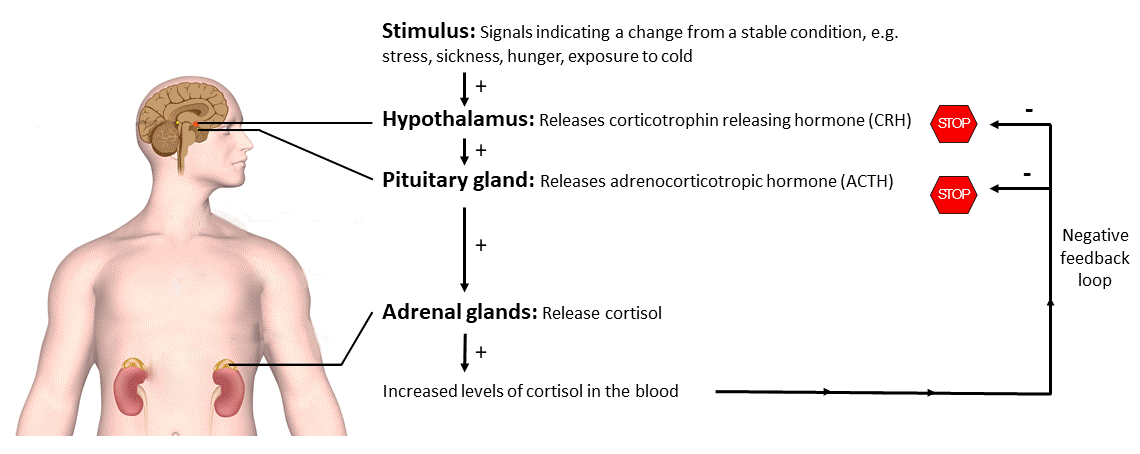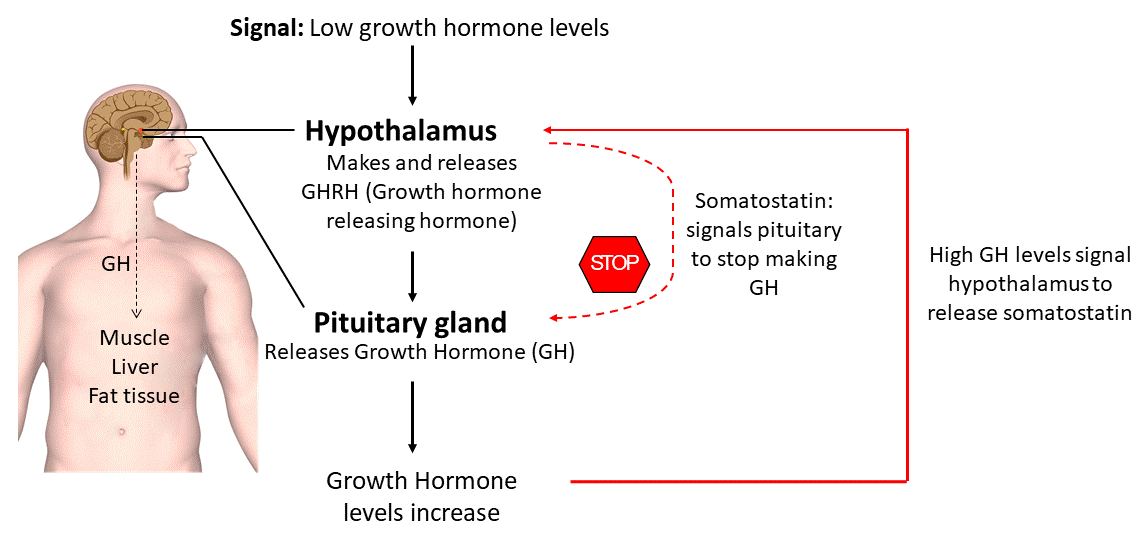Location of the hypothalamus
The hypothalamus is an area of the brain (about 3.5 cm long) that links the brain to the endocrine system.
The hypothalamus sits at the base of the brain and is connected to the pituitary gland by a stalk made of both nerves and blood vessels. Most hormones made by the hypothalamus are carried through this stalk to the pituitary.
Functions/Roles of the hypothalamus
The hypothalamus is the main link between the endocrine and nervous systems. Its key function is to produce hormones that keep the body in a stable condition, called homeostasis. It does this by coordinating the messages and signals received from other glands (hormones) with those from the brain (nerve impulses).
Together, the hormones made by the hypothalamus directly or indirectly regulate:
Keeping hypothalamic hormones in balance
Anti-Diuretic Hormone (ADH)
Anti-Diuretic Hormone (ADH) is controlled by a negative feedback loop. The hypothalamus increases ADH when there is too much salt or electrolytes in the blood, or when blood pressure or volume falls. When the hypothalamus senses that salt concentrations and blood pressure have returned to normal, it makes less ADH.
Oxytocin
Oxytocin is controlled through a positive feedback loop. Oxytocin starts to be made when nerves leading to the hypothalamus are activated. This occurs when a baby starts to suckle at the breast. As the baby feeds, the nerves in the breast signal to the hypothalamus to release oxytocin. More and more oxytocin is released until the nerves stop signalling when the baby finishes feeding.
Corticotrophin Releasing Hormone (CRH)
Corticotrophin Releasing Hormone (CRH) is controlled through a negative feedback loop. CRH from the hypothalamus signals the pituitary gland to make adrenocorticotrophic hormone (ACTH). ACTH then signals the adrenal glands to make glucocorticoid hormones. The major glucocorticoid hormone is cortisol. This system is called the hypothalamic pituitary adrenal axis (or HPA axis). Cortisol travels through the blood and is recognised by the hypothalamus and pituitary gland. When a threshold is reached, cortisol signals to the hypothalamus and pituitary to make less CRH and ACTH. The HPA axis is the main system that is activated in response to stress.
Thyrotrophin Releasing Hormone (TRH)
Thyrotrophin Releasing Hormone (TRH) – is controlled through a negative feedback loop. TRH from the hypothalamus signals the pituitary gland to make thyroid stimulating hormone (TSH). TSH then signals the thyroid to make thyroid hormones. These hormones travel through the blood and are recognised by the hypothalamus and pituitary gland. When a threshold is reached, the hypothalamus makes less TRH and the pituitary makes less TSH.
Gonadotrophin Releasing Hormone (GnRH)
Gonadotrophin Releasing Hormone (GnRH) is controlled through a negative feedback loop. GnRH from the hypothalamus signals the pituitary gland to make luteinising hormone (LH) and follicular stimulating hormone (FSH). In men, LH and FSH signal the testes to produce testosterone. In women, LH and FSH signal the ovaries to make estrogen and progesterone. When these hormones reach a threshold level, the hypothalamus makes less GnRH.
Growth Hormone Releasing Hormone (GHRH) & Somatostatin
Growth Hormone Releasing Hormone (GHRH) and Somatostatin work together to control growth hormone (GH) levels. Growth hormone releasing hormone signals the pituitary gland to release growth hormone. Neurons (nerve cells) in the hypothalamus monitor growth hormone levels. When levels are high, the hypothalamus releases somatostatin which signals the pituitary gland to make less growth hormone. These two hormones rise and fall in turn, which keeps growth hormone levels within a normal range.
Common problems and conditions of the hypothalamus
Tumours of the hypothalamus can result in altered hormone production and release. Because these hormones are important messenger signals for other glands in the endocrine system, this can lead to endocrine problems or conditions. For example, see Growth Hormone Deficiency.
Page last reviewed on 2 Mar 2023




